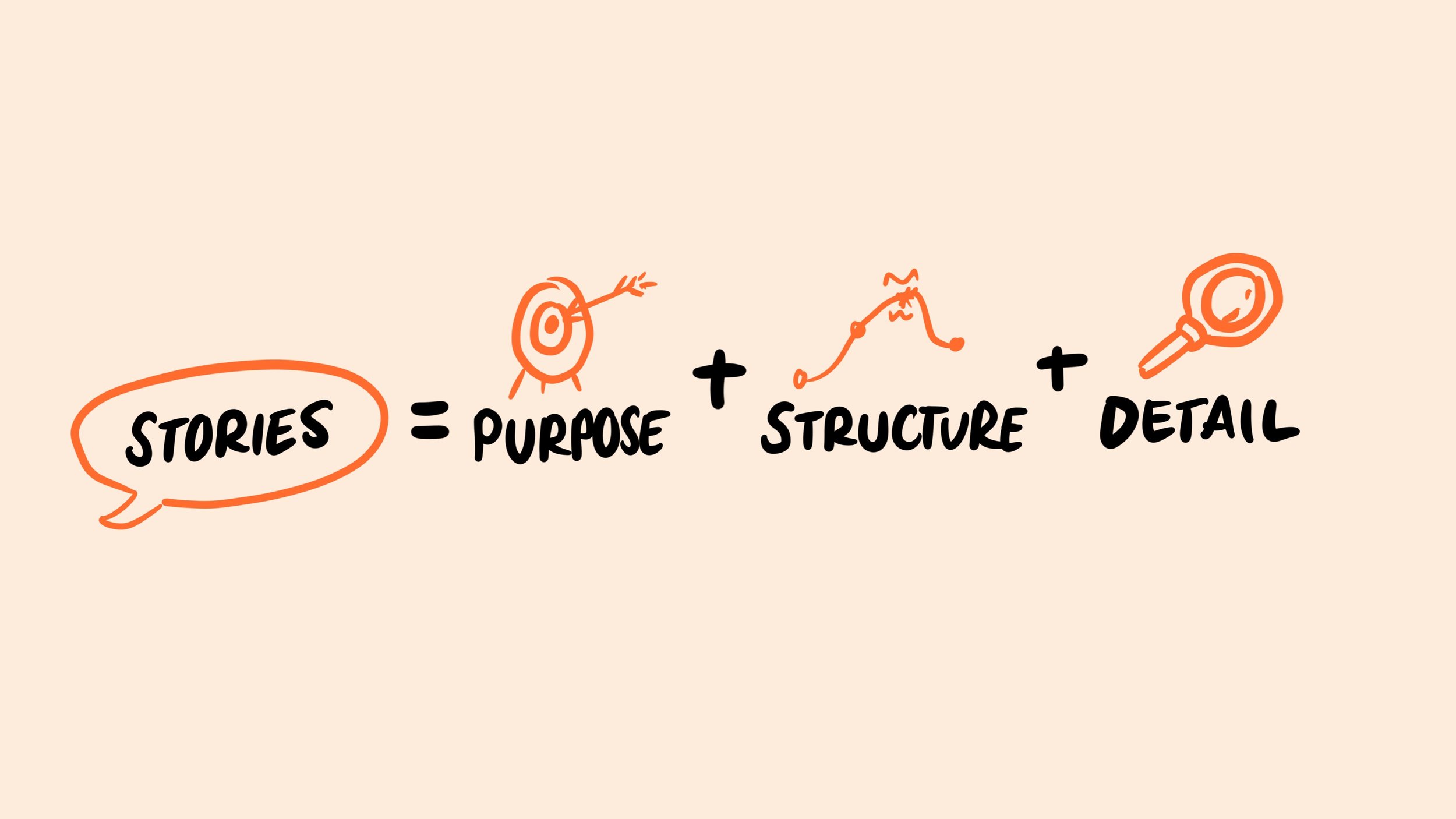Storytelling is a powerful way to explain your research clearly, connect with audiences and drive impact.
Why?
Check out this 1 min explainer:
So how can researchers tell stories with impact?
Use the 'magical' story equation.
Stories = purpose + narrative structure + detail
Story purpose
If your story has no purpose, there is no point in telling it. It’s like playing catch with someone who won’t throw the ball back.
According to leading visual communicator Dan Roam, there are 4 purposes for all communication:
To improve awareness of something
To improve ability to do something
To change actions
To change beliefs
Once you have your purpose, you need a story structure to help achieve that purpose. Here's the best one for each:
Problem, Solution, Result for awareness - explain what the problem is and how your audience are struggling. Explain how you can offer a solution. Explain what the result is if your audience implement that solution.
The Mountain for ability - take your audience through stepping stones of knowledge to get them from ignorance at the bottom, to gradually more knowledgable in easy steps. All teaching looks like this.
Sparklines for actions - Nancy Duarte coined this. You start with why the situation is crap now, and then show your audience how it can be better with an input e.g. a product, a thought process, a course. Repeat this contrast, ending on a high ('how it could be').
Hero's Journey for beliefs - the million dollar structure. We have a hero (usually your audience) and set the context. Something terrible/momentous happens to them and we reach a climax of action where they try to overcome said event. They overcome it leading to falling action to lead us into the next story.
Here’s a visual storytelling summary for you:
Now you have your purpose and your structure, you just need to add detail - people, places, problems and processes to bring them to life.
Try this when delivering your next PowerPoint presentation or crafting your next conference poster.


